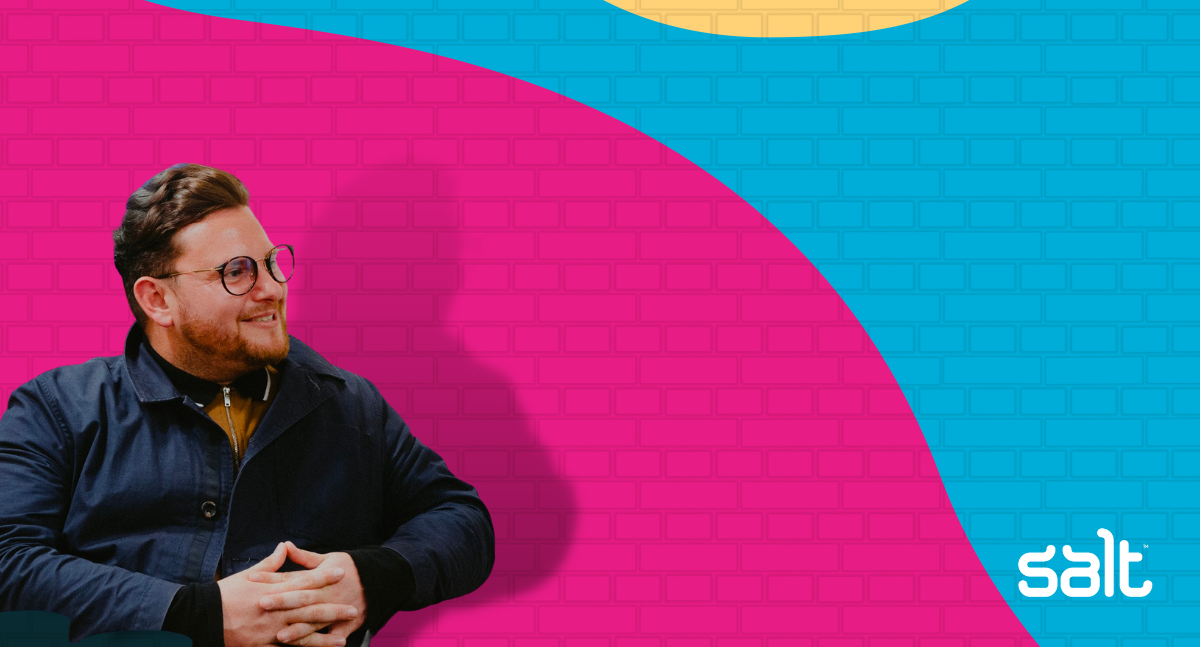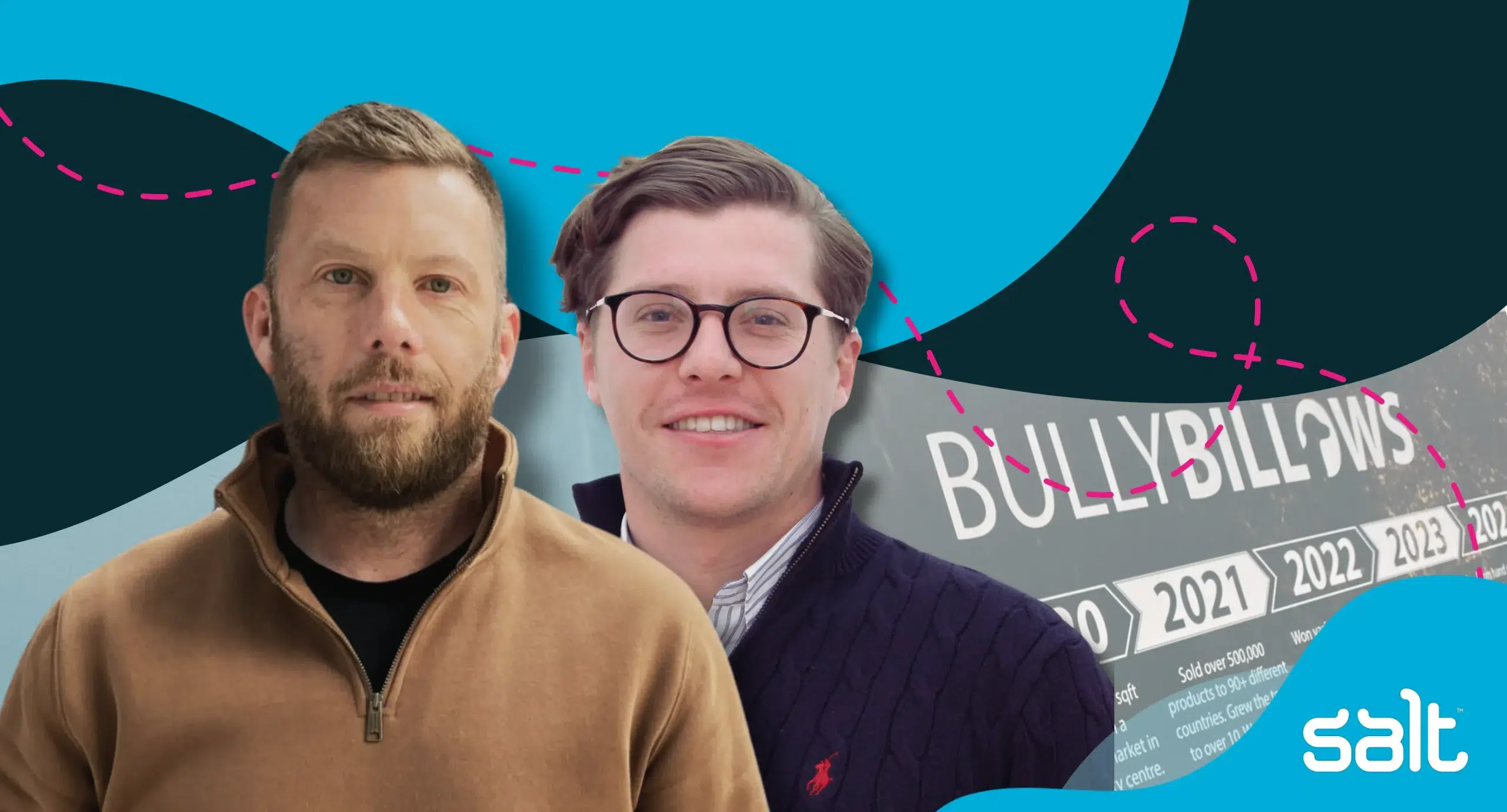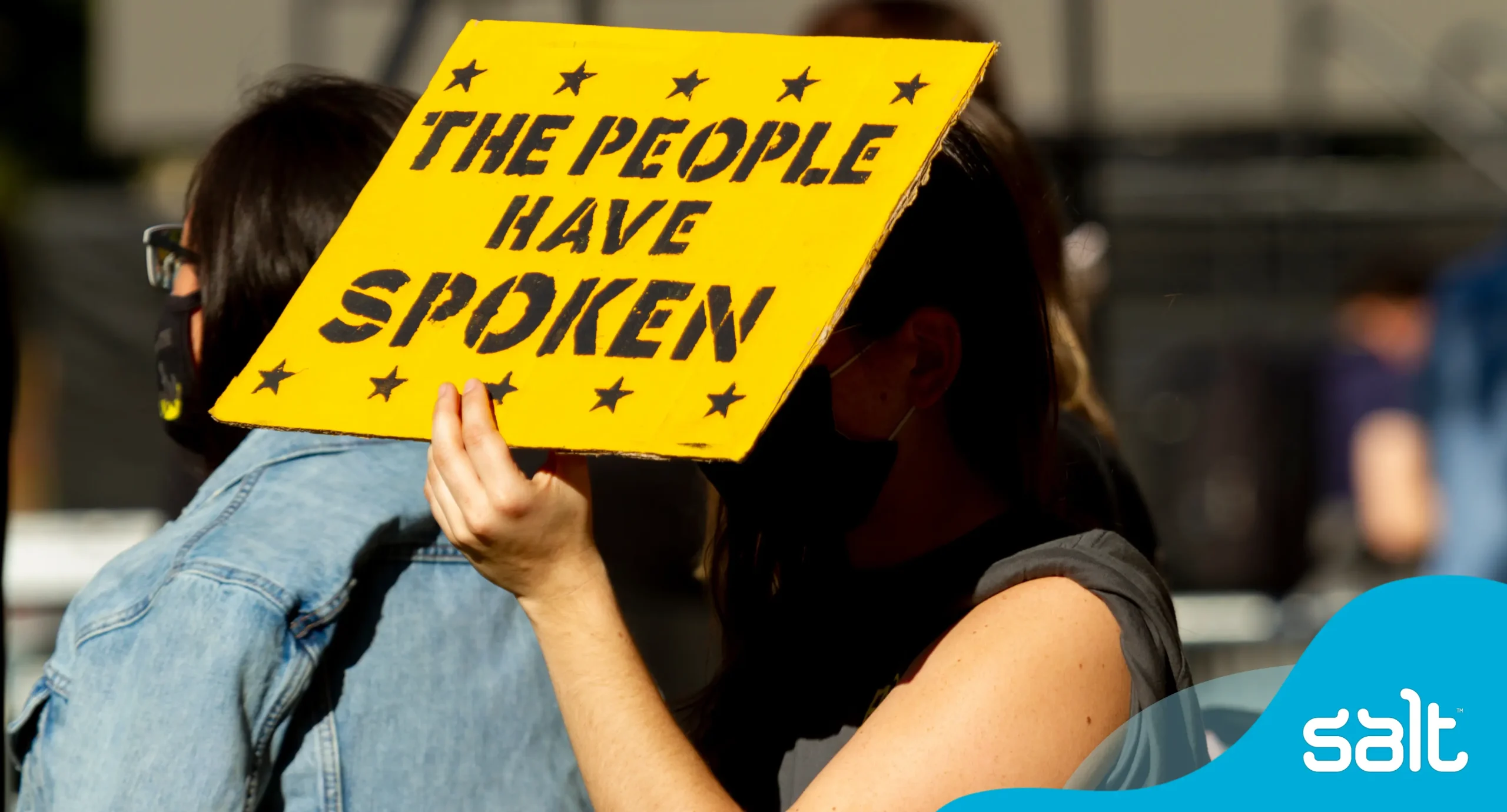
The Product Design job marketplace has shifted in significant ways. Nick McKay, Lead Product Designer at Go City, shares his experience and advice to help both experienced and aspiring Product Designers fall in love with the Produce Design process.
In this interview series Associate Director Consultant for Creative, Holley Potts, gives you a snapshot into creative career journeys: from what employers are hiring for and how candidates can break into these exciting roles, to what the future holds for the Product Design industry.
Hiring in Product Design? Salt can help
A word from Holley Potts
Post-COVID there has been a significant shift in the Product Design market, which I’ve heard about first-hand from speaking to many Heads of Product Design. Some have said they’ve not seen anything quite like this in the last 20 years. There have been fewer roles, and more uncertainty, to contend with.
I am so excited to share this interview with Nick McKay, Lead Product Designer at Go City. We talk about everything from what a Product Designer is to what the job market has felt like to how to see the best results as a Product Designer or as a manager of a Product Design team. His insights into the industry will help experienced and aspiring Product Designers alike fall in love with the Product Design process and add real value.
What’s your experience of the job market for Product Design been like in 2023?
It’s an interesting question. Market wise there is a whole lot of talent in the market.
I have got to the point now in my career where it’s not about the portfolio, I now look for soft skills. Those types of behaviours are more important to me as a manager because I want to know that I’ve got someone that can really work well within my team. The skills can be taught.
The crux of UX/ UI design and product design means we are there to solve problems.
I want people to take a step back and think holistically about the types of problems they’re solving by doing case studies. What was the solution and what was the problem we were solving as a UX designer or a UI designer? How are we affecting the customer’s behaviour?
I think that people with portfolios sometimes miss some of that. We always need to be focused on how we solve those customer problems.
I think a lot of portfolios can sometimes be geared towards people talking about themselves and how great they are, rather than how great the solution is that they provide and how did that solve their customer issues?
So yes, I think it is a flooded market. I think there are great senior talents out there that have been through the weeds and done their time.
There’s also a lot of new early talent entering the market that maybe have false expectations of themselves or the jobs or the roles that are available, and probably missed the real crux of actually, “I’m here to do a job to solve the customer problem to create better experiences.”
I always lean on the cultural side of things because that’s the hardest to teach.
I can’t teach you to be a nice person. It’s very easy for me to explain to someone and teach them to be a better designer because there are so many resources available, but to coach behaviour that is intrinsic to a person and their personality is very difficult.
Designing your online portfolio? Here are 10 tips to help you showcase your skills
What should the role of Product Designer entail?
From a Product Design perspective, what you’re trying to achieve is creating products for a customer who are trying to solve a problem. You must make it your primary goal to research and find out their incentives and their behaviours.
The research side of things in UX gets forgotten for those that came from a less traditional route because they don’t quite have that knowledge to ask the customer what they want. Find out from them, test and do focus groups with customers to find out the root cause of their problem and how we can solve it.
I think it’s some of those more holistic teachings that maybe some of the again earliest-age careers don’t have because they have just done a Google course. Every portfolio I see now looks the same. It has the same flow. You know, they talked about problems, they’ll show the UI kit, and then they’ll there’ll be some designs that they’ll add a little bit narrative to.
I want to see a more holistic approach:
- Who did you talk to?
- Did you do any guerrilla testing?
- What were the prototypes that you walked them through?
- What were the problems that they got from it?
- How did you discern the insights that you got back and validate them?
What is the best way for Product Designers to showcase their talent in an interview?
Fall in love with the process. The process must be everything.
What are the steps you’re taking to resolve the problems that your customers are experiencing? For me, that’s a big thing, especially in the world of today where things are designed so quickly: get it out, move on, or do some kind of qualitative research and find out if it’s good or not. You’re going to cost your companies lots of time, money, and effort by doing it that way.
I’d rather do the qualitative research at the start. We soundboard everything that we’re trying to do with our customers and put that process at the forefront of the Design, Devs, and stakeholders.
But it shouldn’t end there. When you get the product out, that’s when you should be listening to the quantitative data:
- What are we getting back?
- What are the metrics that we’re affecting?
- How does that cyclical approach work after that?
I think there is a failure in design where people think, “Oh, I’ve done my job of design and I’ll park that now.” No, you got to go back three, four, or five times to an iterative process to make sure that you’re providing the best experiences and learning where your customers are still potentially having pain points.
Fall in love with the process. Especially people that are early on in their careers. They have to make sure that they are living and breathing the process because it is always what’s going to turn their work from good to great.
Product Designers need to come from a commercial perspective. Make sure you’re going through the cycles. That’s how you will get the best results.
With Design Teams being cut, what should employers understand about how design helps company strategy long term?
I’ve worked very hard to have a design-first approach. It’s difficult when you have certain commercial aspects that are also pulling levers in the background, and you step into the boardroom to fight it out. I’ve got thick enough skin over time that I can do that.
What’s good with design is that we’re able to move and change with the times and generally most designers after a few years are leading businesses.
There’s a whole larger commercial decision that must go around like cultural adoption within the business. How are you waiting on personal agendas in the business versus the real commercial kind of games? What are we wanting to achieve? What are our budgets like?
I’m very much in favour of a design-first approach.
I think that that’s where you get some real creativity, some great ideas, but it’s equally important to bringing the people who aren’t creatives in the business along with you. Everyone is creative in a certain way. It’s just our phobias, and preconceptions that hold us back, so give people the right avenue to be creative.
I’ve become more of a do and show now. Whereas before, I would ask people for input, and it would get side-lined. What I’ve chosen to do now is to do it and show them and let the results speak for themselves. If you can do something, show them, and then afterward say, “Oh, you’re going to get involved” There was a little bit of hesitancy. So, we’ve gone ahead and done this, and these are the results.
That for me is the best way you can get adoption within your business because you’re bringing people on the ride with you, you want these people to, again, get into your ways of working your mindset, whether that’s Agile or Waterfall, however, you’re working as a business.
Those creative workshops, I think is the easiest way to install design thinking in a business. You must bring those people on the journey, and you’ve got to find ways to make them creative. And that is the easiest way to gain design adoption.
Creativity flourishes through happy people. What methods do you use in your team to create happiness?
There are different things that we do as a team, from just from having a smile in the morning to being pleasant to people.
I think it’s powerful to be nice to people and treat them with respect.
For us as a team, we go out, we have social activities, and we have a fun time when needed.
Equally, I don’t have a problem with how, where, or when my team does their work. If they get it done. I’m not a traditional nine-to-five. That’s not productive for some people. Some people work differently. I think we’re in an age now where we must understand that different people require different mechanisms to make them successful.
And for me, it’s giving them that freedom to decide for themselves.
They guide me on how I should behave and treat them because I want them to have the best working environment for them to succeed.
What piece of advice would you tell your past self when you were just starting in your Product Design career?
Behaviour-wise, I was very different in my younger career. Probably because of the influence of managers, the working climate at the time and the industries that I was in.
My advice is the same advice I give people now and it is just to be fearless and not to worry.
- Don’t stand in your way. Be your success.
- Be positive about every interaction you have with people because you never know who you’re meeting.
- Treat everyone with the same respect.
- Do what makes you happy.
I think that is the big thing: to always be chasing the dream. Otherwise you are chasing the ideal.
If you simplify things down to “Am I happy or not”, it generally leads you to better decision making.
Hiring? Salt connects you to outstanding top talent worldwide
If you’re interested in hearing about how Salt’s top talent recruitment experts around the world can help with your hiring right now, get in touch. Click below to contact the closest Salt team to you!
- Australia
- Canada
- Belgium
- Europe
- Hong Kong
- Malaysia
- Middle East and North Africa
- Netherlands
- New Zealand
- Singapore
- South Africa
- United Kingdom
- United States
Keep up with Salt’s top talent job market insights and hiring advice! You can keep in the loop by following us on. LinkedIn, YouTube, Facebook, Instagram, and Spotify.


